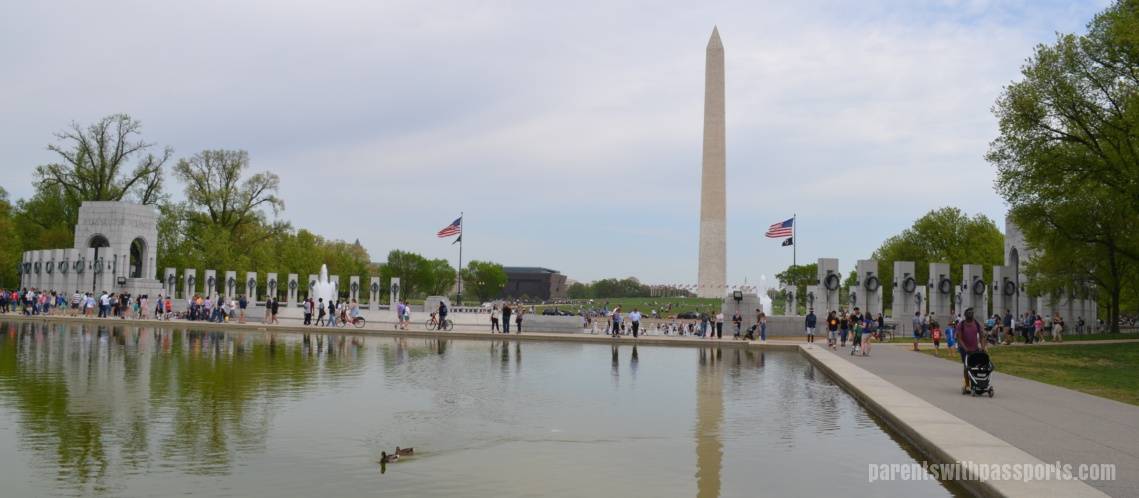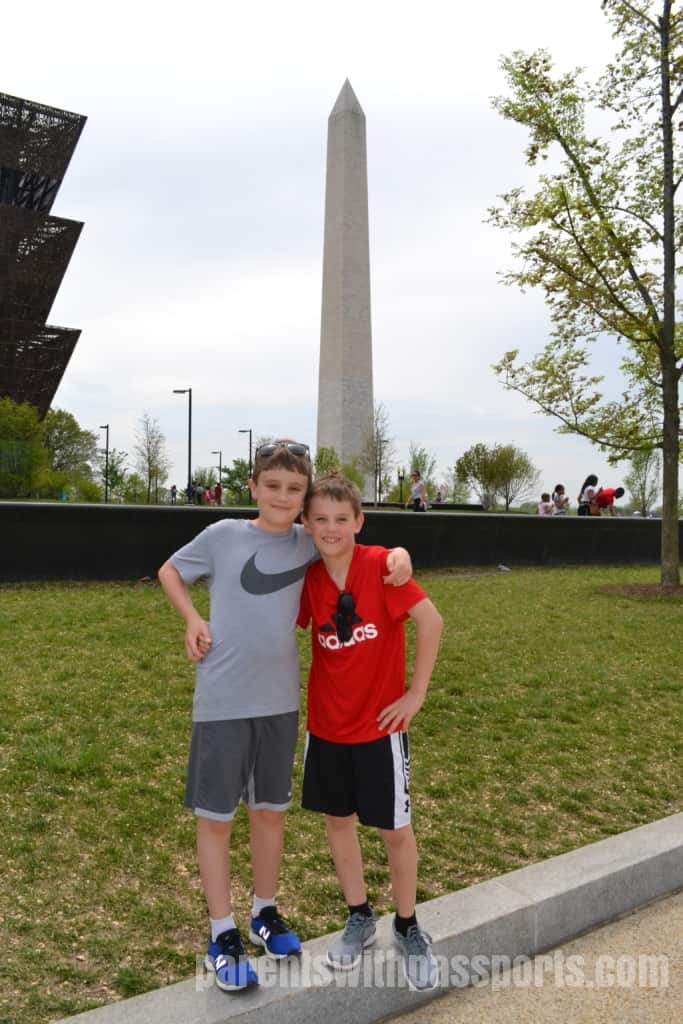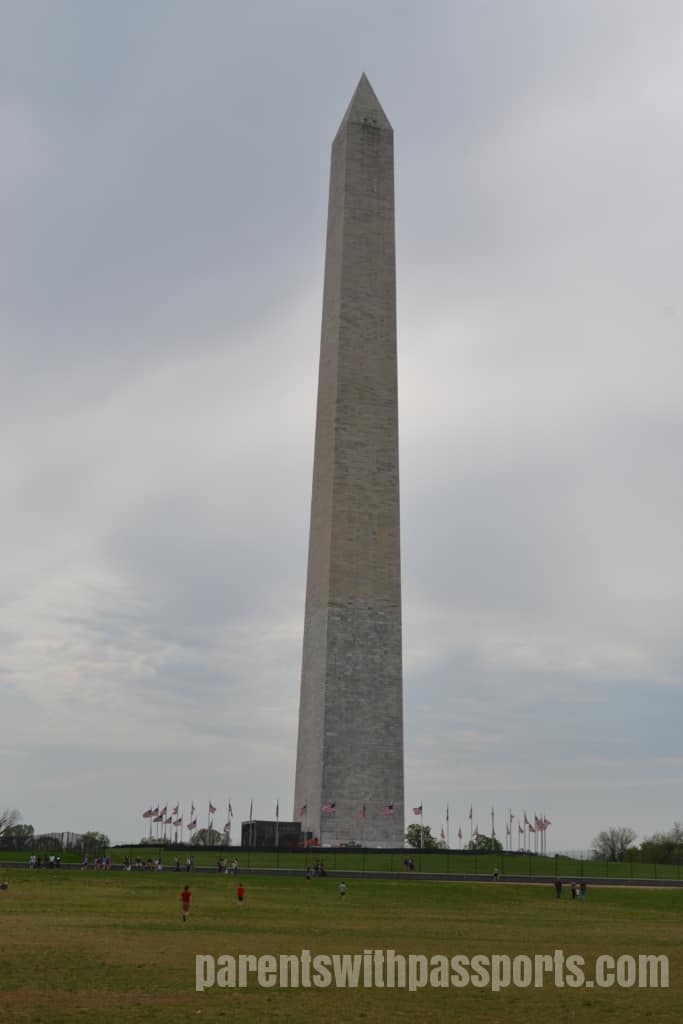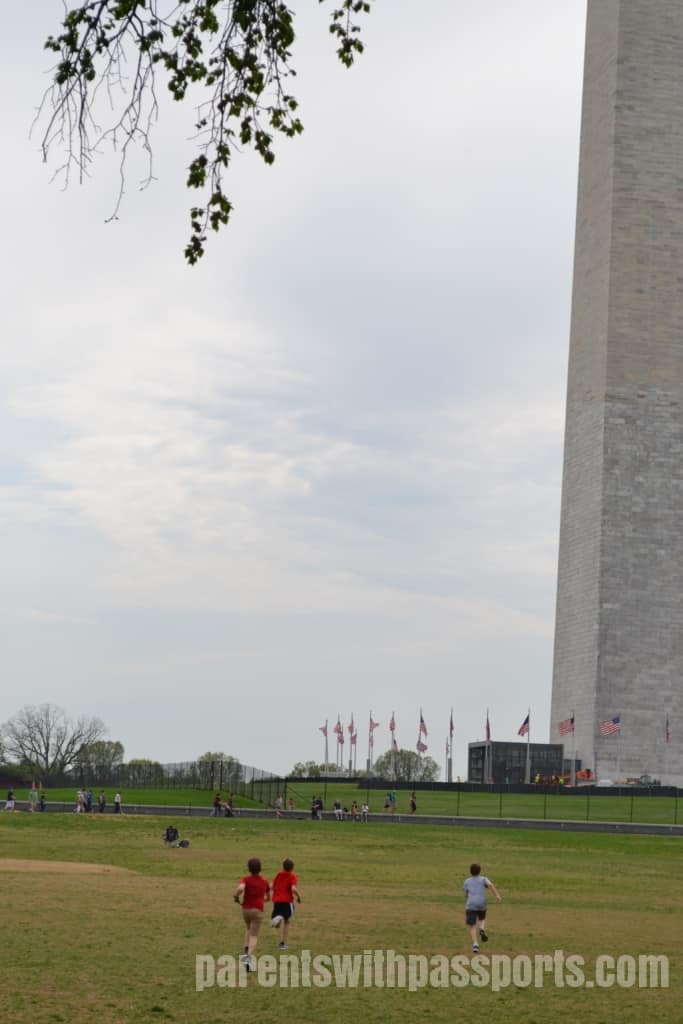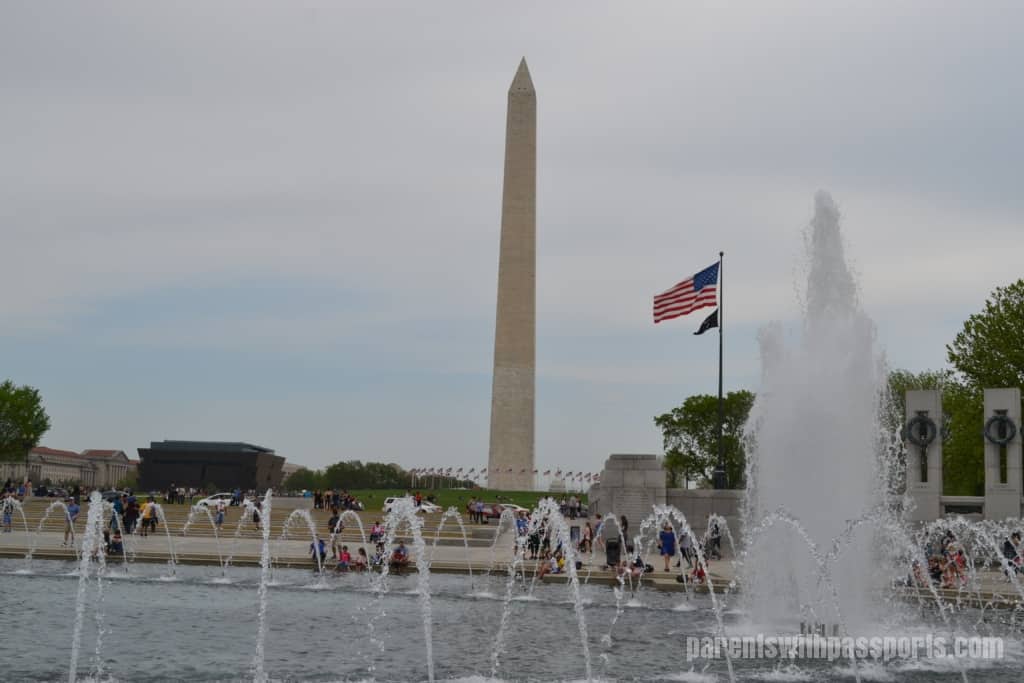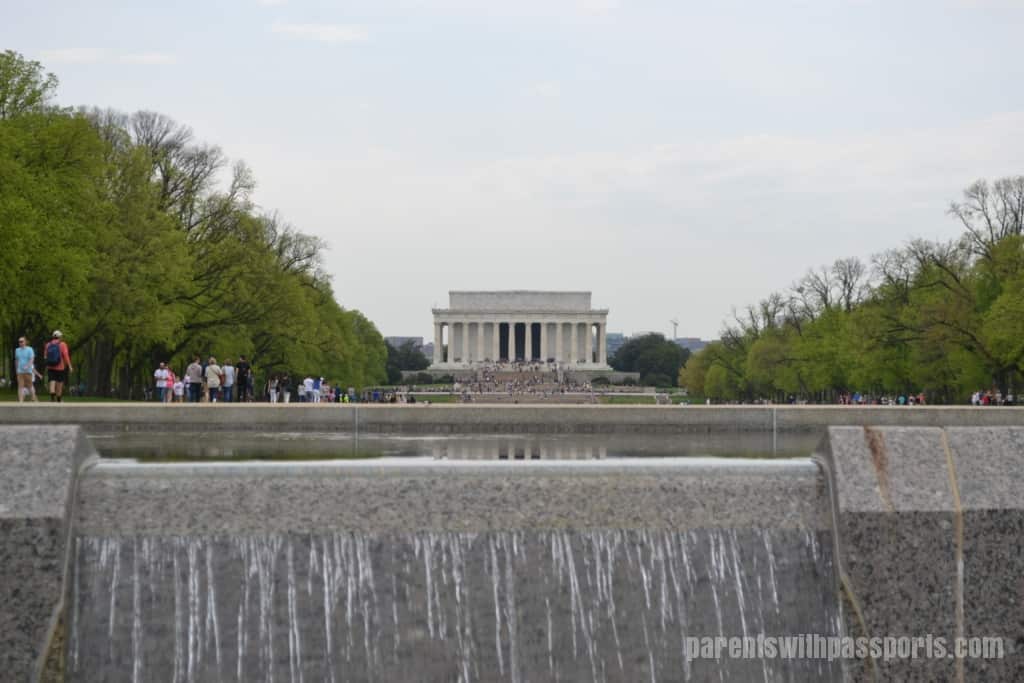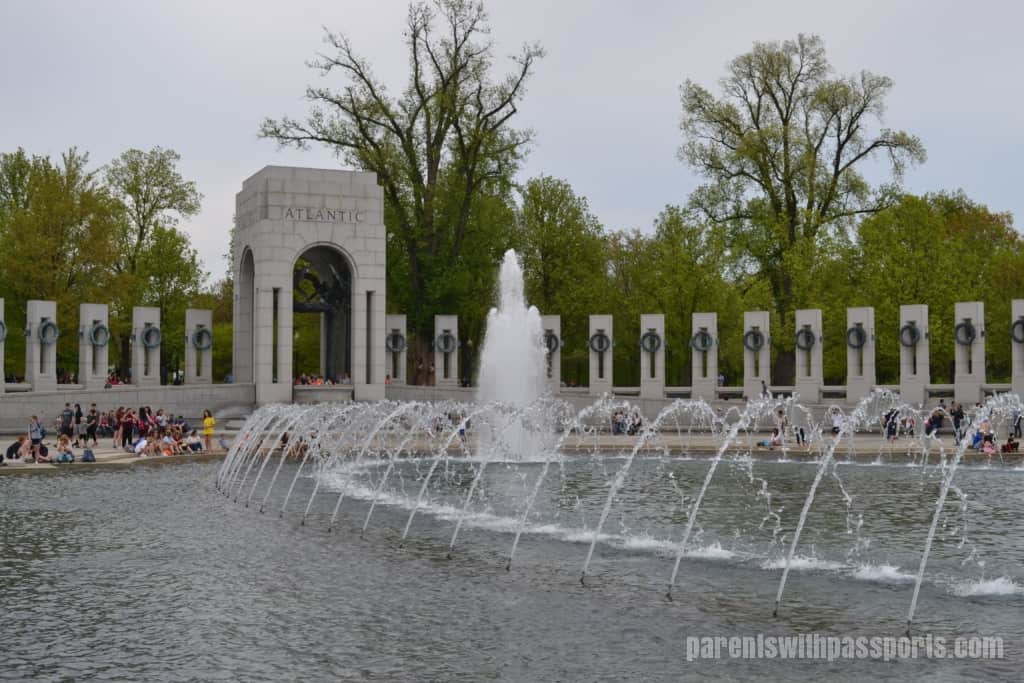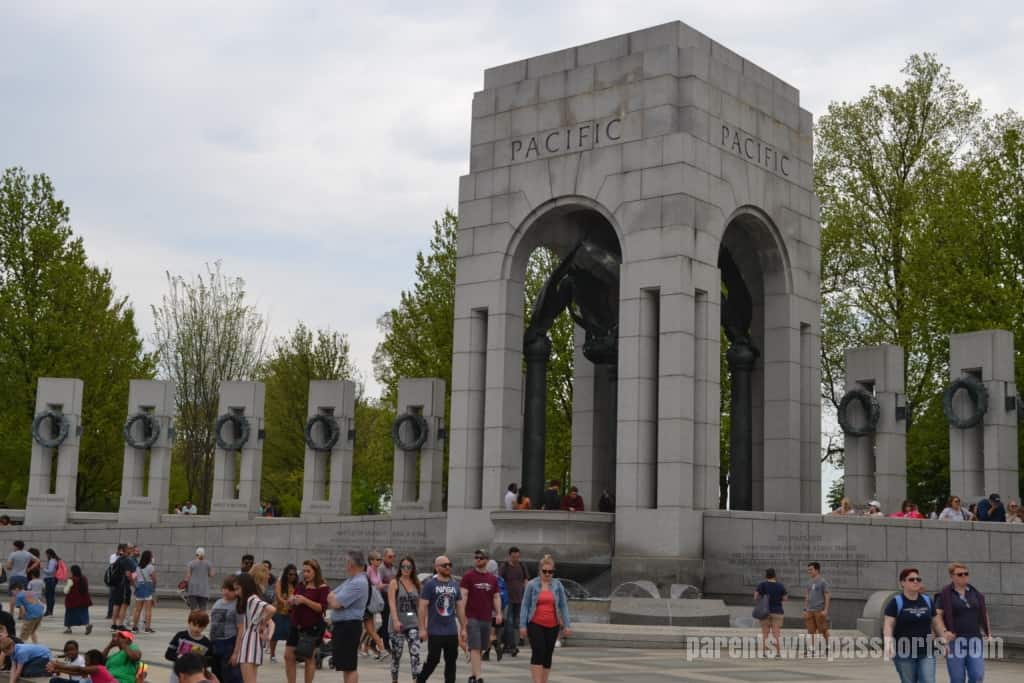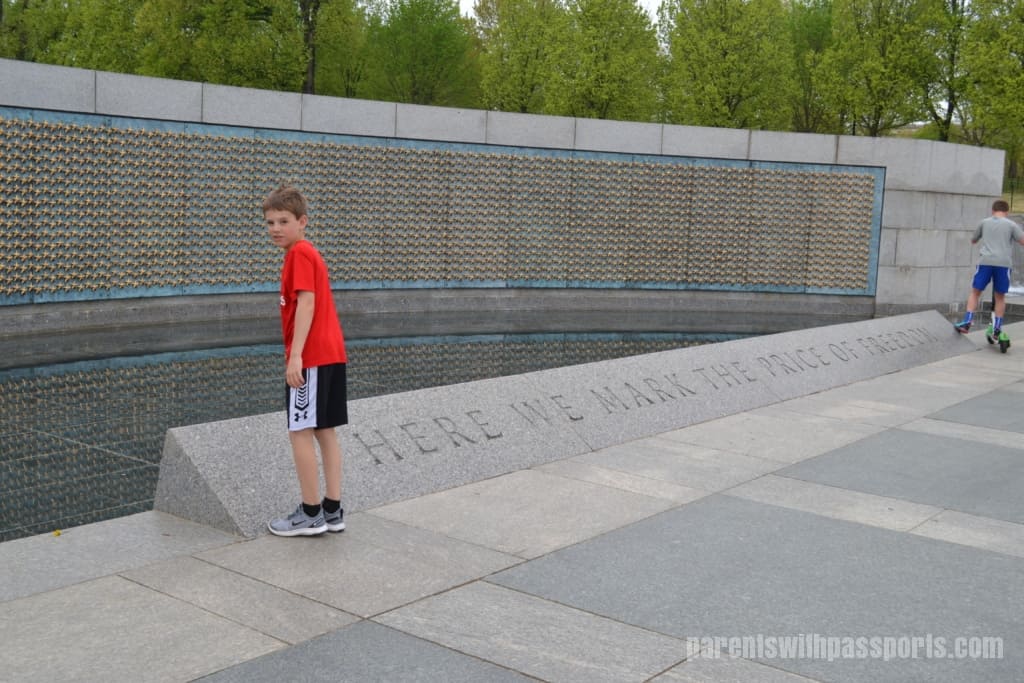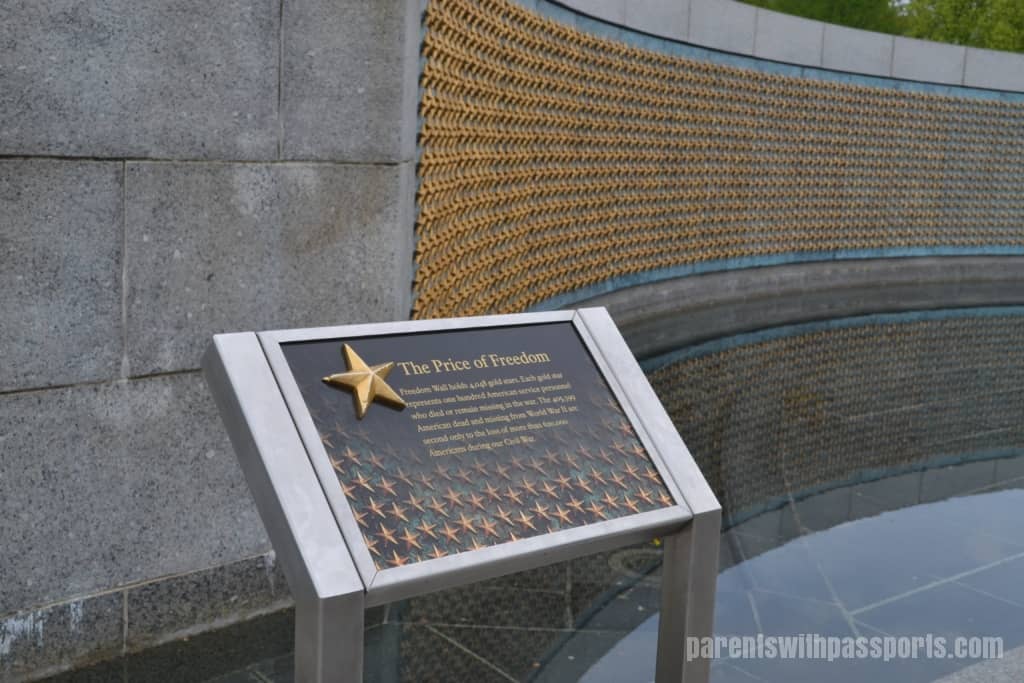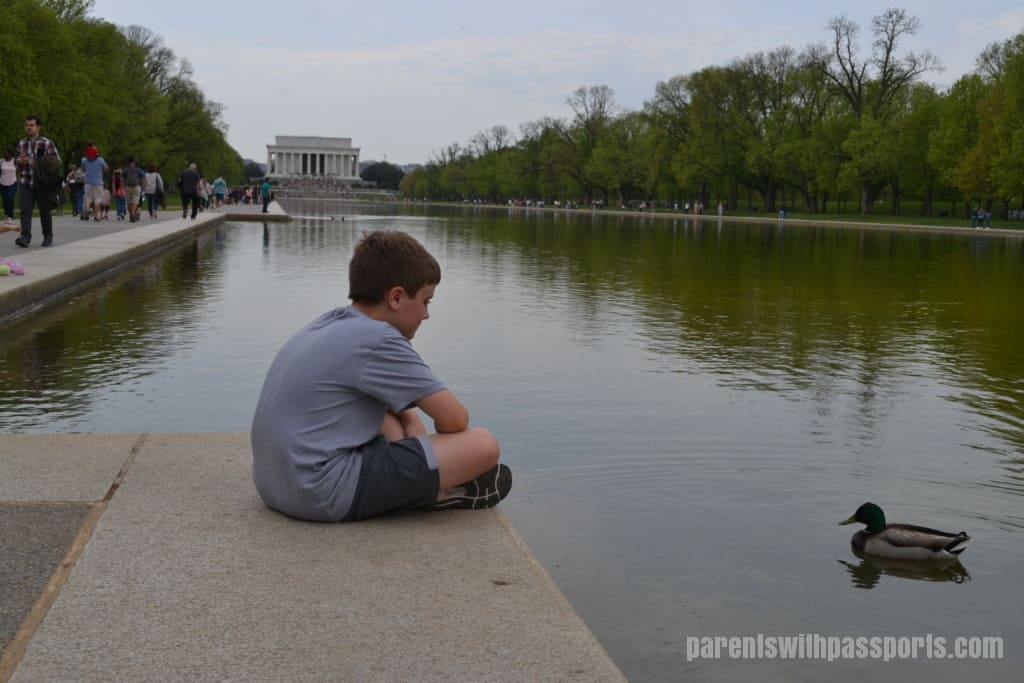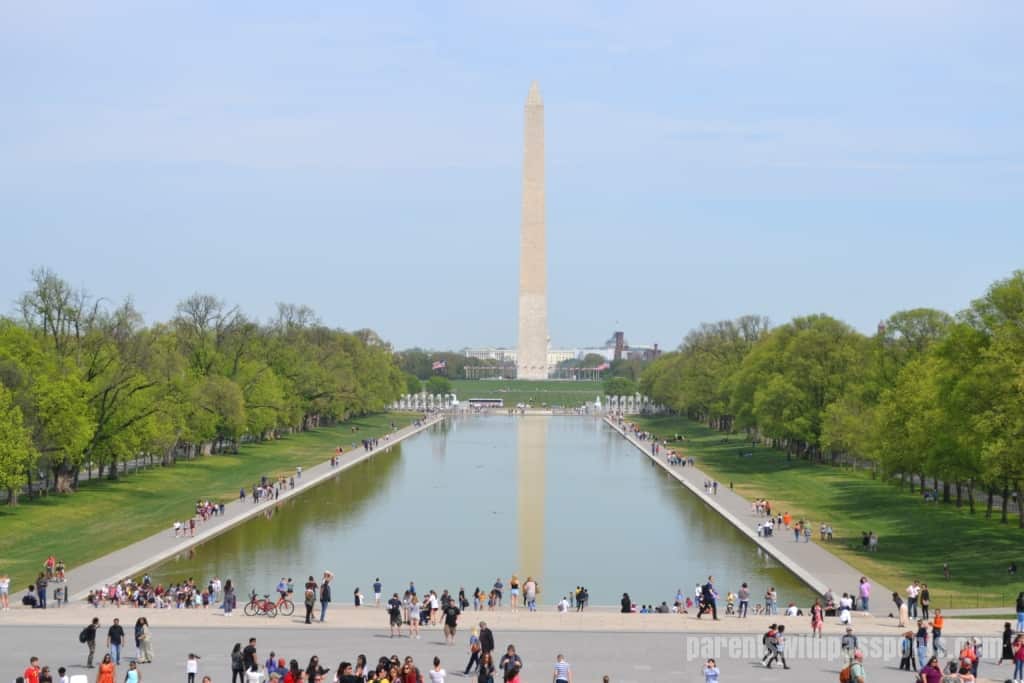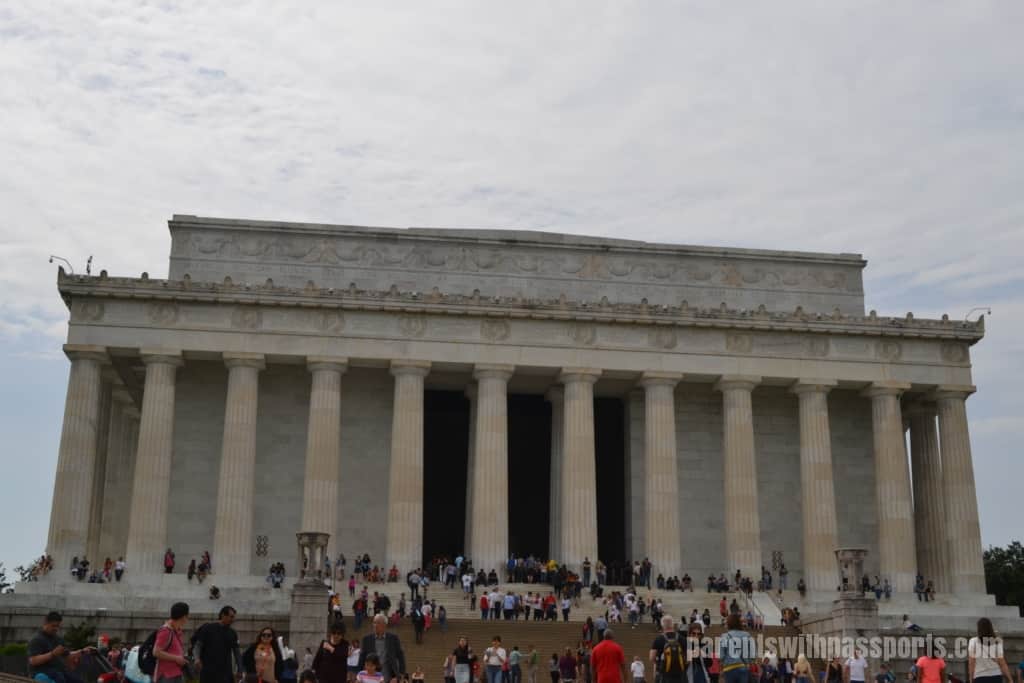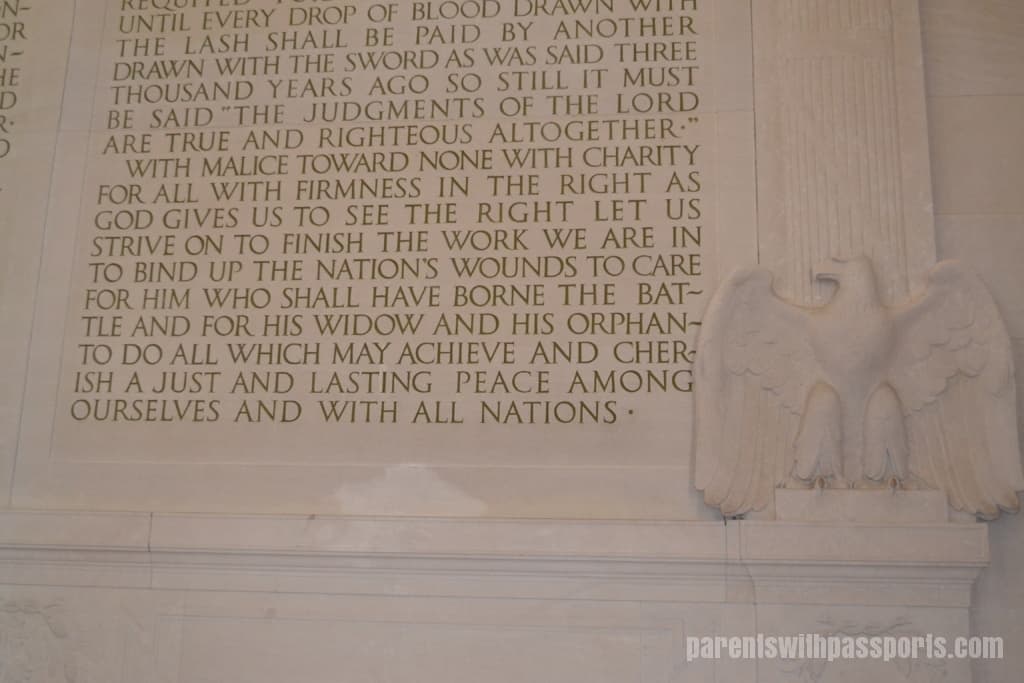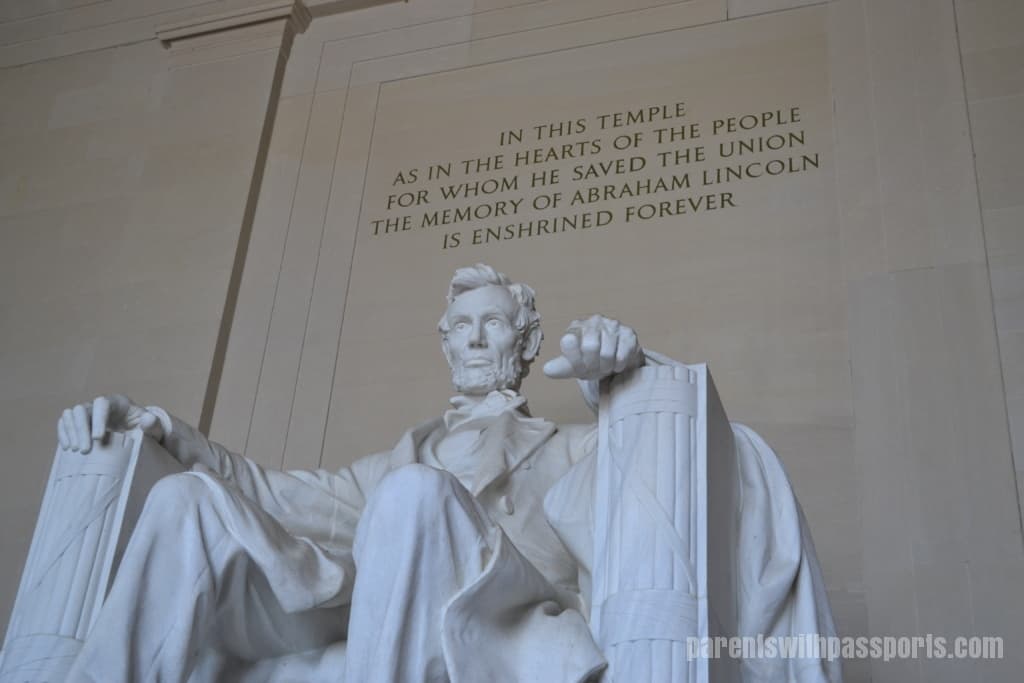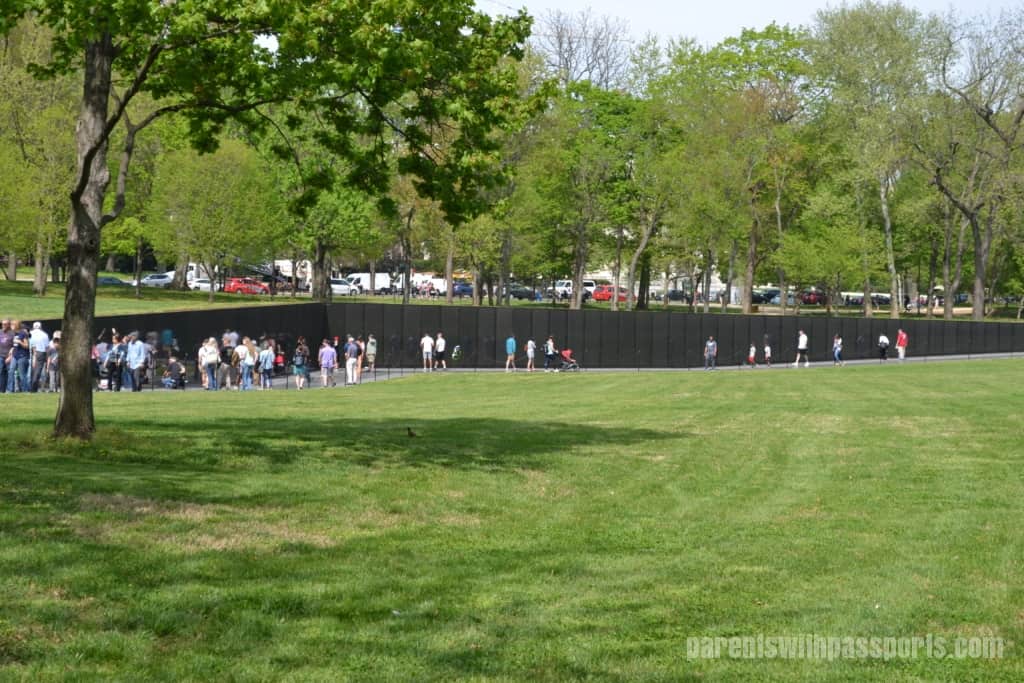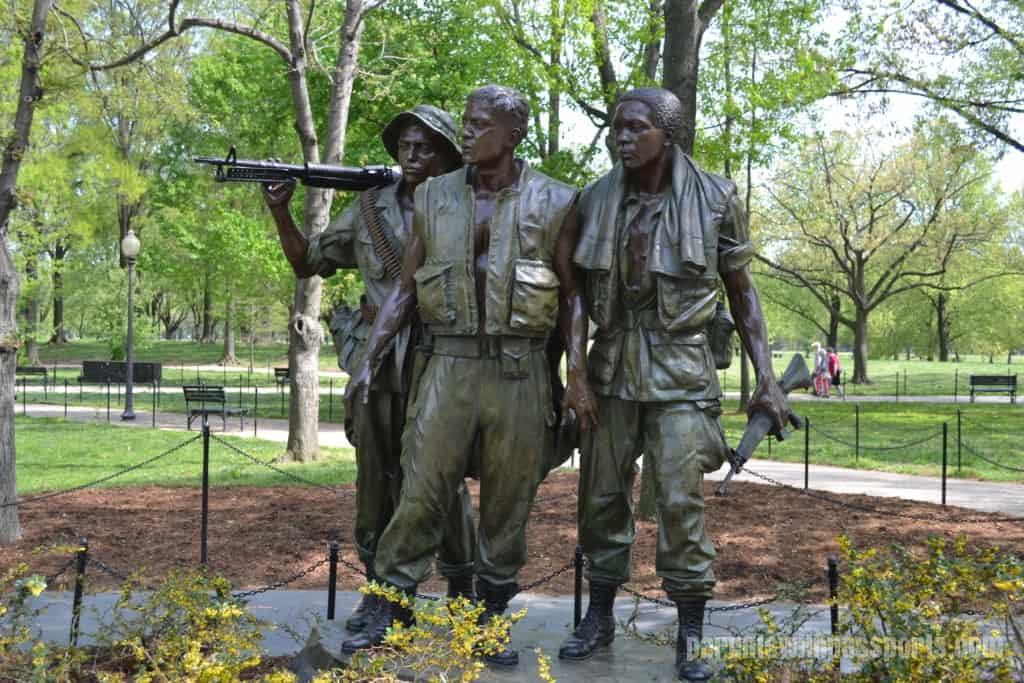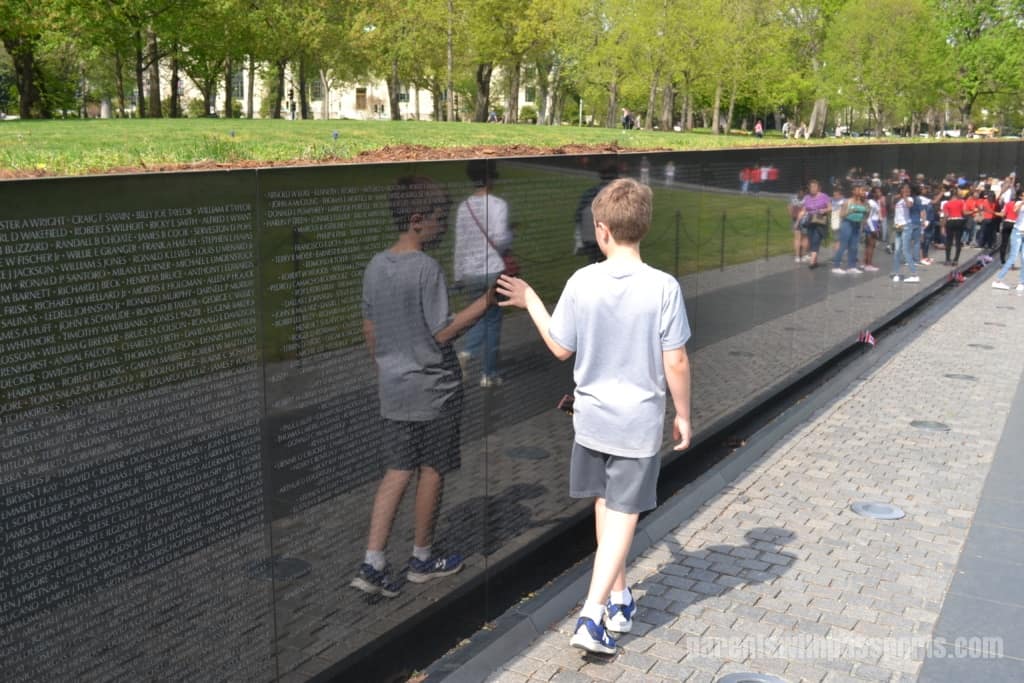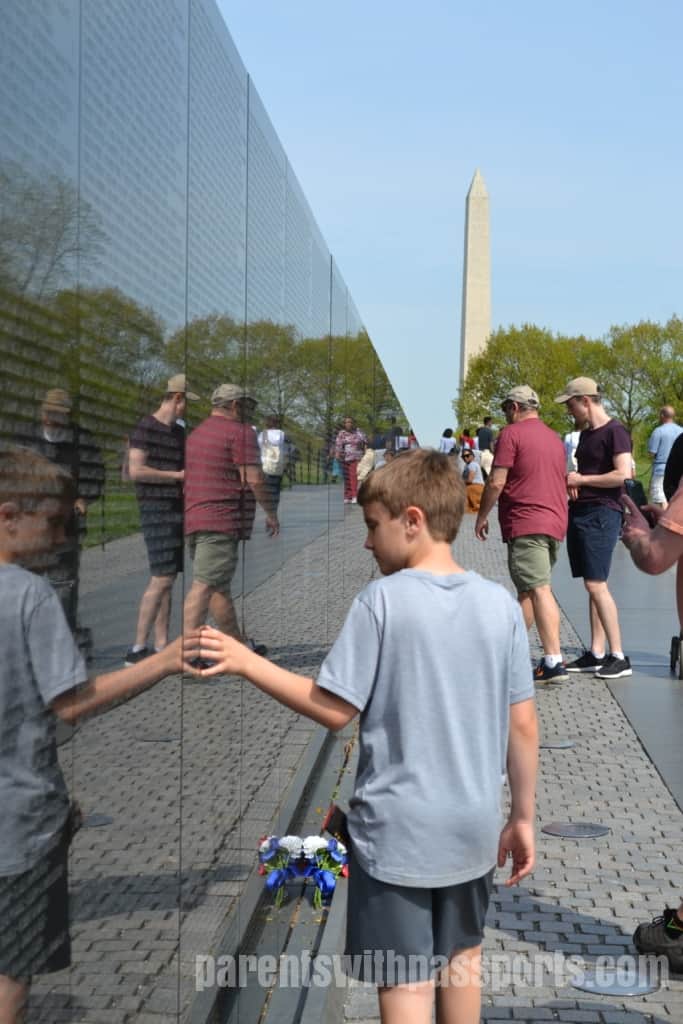Washington DC is famous for its monuments. They can be found everywhere from the National Mall to random street corners throughout the city. A celebration of those who shaped our nation, you can spend days wandering the city trying to see them all. With just an afternoon to dedicate to this pursuit, we focused on the monuments on the National Mall between the Washington Monument and the Lincoln Memorial. With the boys tiring and the weather questionable, we fit in what we could.
We started at the Washington Monument, perhaps the most iconic structure in DC. This obelisk is the world’s tallest freestanding stone structure and honors our nation’s first president. Built in two stages, there is an obvious change in the color of the stone about one-third of the way up. The 555 foot memorial is closed to visitors until August 2019 so we did not have the opportunity to go inside. It is a great landmark to orient yourself in the city – memorials are to the west and museums are to the east. And the giant grounds surrounding it are a great place for kids to burn off some energy.
Continuing west, we crossed 17th St NW and came to the World War II Memorial. The memorial itself is beautiful, and its location between the Washington Monument and the Lincoln Memorial provides a unique vantage point.
I think this is one of the most visually stunning memorials. Sitting at the east end of the Reflecting Pool, the memorial honors the 16 million military personnel who served in WWII. Flanked by an Atlantic Arch and a Pacific Arch, the fountain in the center is partially surrounded by a semi-circle of granite columns. The 56 columns represent each of the 48 (at the time) states, the seven federal territories, and the District of Columbia.
The Freedom Wall is located on the west end of the World War II Memorial and honors those who lost their lives in the war. There are 4,048 gold stars on the wall, each representing 100 Americans who died in the war. An inscription on the stone in front says simply and powerfully “Here we mark the price of freedom.”
We spent a good bit of time at the WWII memorial, taking it all in, searching for different states on the pillars, and hanging out / splashing by the fountain. When the kids were ready to move on, we started making our way to the Lincoln Memorial. But first we had to stop to hang with the ducks at the Reflecting Pool.
Marking the far west end of the National Mall, this memorial is one of DC’s most iconic landmarks. You could definitely feel the crowds more here. The steps were packed and the interior of the memorial was wall to wall people. It’s easy to see why the memorial attracts so many people. In addition to the impressive memorial itself, it has one of the best views in the city. The importance of this location has been recognized throughout American history. Many significant historical events took place here, most notably the March on Washington and Martin Luther King Jr’s “I Have a Dream Speech.”
While the location is second-to-none, the memorial itself is equally impressive. The exterior of the memorial was built to resemble Greece’s Parthenon. The 36 states at the time of Lincoln’s presidency are represented by the 36 columns that support the monument and the engraved names on the frieze. Inside, the statue of Lincoln is flanked by two rooms – each with an inscription from Lincoln’s most famous speeches, the Gettysburg Address and his Second Inaugural Address. The boys were super excited to see a quote that the Park Ranger at Ford’s Theatre had talked about extensively: “with malice towards none; charity for all.” It was a neat moment to see the two historic sites tied together in their minds.
And of course the statue itself is impressive. The huge statue of Lincoln sitting in a chair is 19 feet from his feet to his head in a sitting position, meaning he would be roughly 28 feet tall if he were standing. I will never forget our first visit to the Lincoln Memorial when our youngest was only 4. The statue scared him. I held him and felt his little hands squeezing tightly around my arm. He asked me if that was a real person. I explained that it was a statue carved out of stone to represent a real person. He looked at the imposing figure and whispered quietly in my ear “but he’s so big.”
Five years later, the statue is more impressive than scary to the boys. They really took their time at the memorial, reading all of the inscriptions in full, and browsing the gift shop to buy books about Lincoln. It was great to see history come to life for them. The visit to the memorial was definitely more meaningful after having been to Ford’s Theatre that morning.
Our final stop on our walking tour of the monuments was the Vietnam Veterans Memorial, which consists of the Vietnam Women’s Memorial, the Three Servicemen Statue, and the Memorial Wall itself. The Memorial Wall was the first part of the memorial, completed in 1982 to honor the more than 58,000 who died or went missing in action in the Vietnam War. The wall was originally intended to be the complete memorial, but the black granite V shaped wall proved to be controversial, just like the war it was representing.
The concept of this memorial departed from the other memorials seen around the National Mall. Lacking statues, fountains, or grand buildings, there was a strong a vocal opposition to the design. Calling it a “black gash of shame and sorrow”, opponents fought its construction. Ultimately, a compromise was reached to add a statue and flag to the memorial (much to the dismay of the original artist).
The compromise came in the form of the Three Servicemen Statue, which honors the diversity of our military during the war. Satisfying the public desire for a traditional statue, it portrays the three main ethnic groups that served together in the war – European Americans, African Americans, and Latino Americans. The statue is positioned so that the soldiers look at the wall, gazing upon the names of their fallen comrades.
Despite its initial controversy, today the memorial is well received and is considered a powerful and moving experience for its visitors. The polished black wall that contains the names of 58,000 fallen and missing soldiers is reflective, allowing visitors to see themselves and their surroundings in the wall.
With over 160 monuments in Washington DC, it is impossible to see them all in a short trip. We spent about 3 hours wandering the National Mall and only visited 4 of them. We missed a few big ones, most notably the Jefferson Memorial. But we had been nonstop since before 9am and had already walked over 10 miles with 4 kids (and had another 2 miles to get back to the hotel). We figured quality was better than quantity and the kids really got a lot out of the ones we visited. Besides, in travel, anything you miss is just an excuse to come back again.
